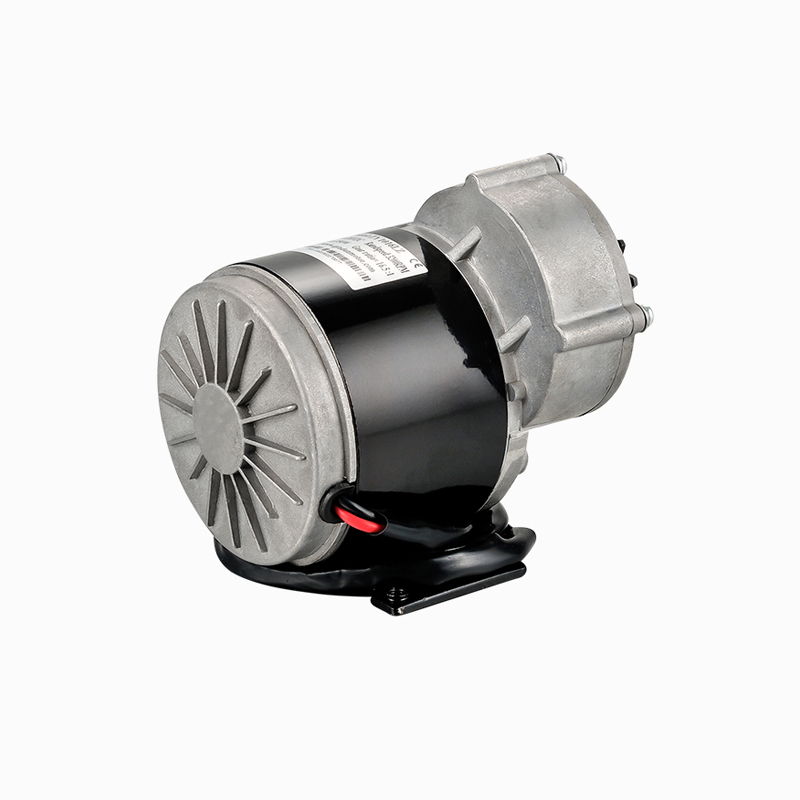Call us
+86-18023576732
+86-0579-89008006
Fax: +86-0579-82206899
The DC brushed motor has long been a staple in various mechanical and electronic applications due to its simplicity and affordability. However, when it comes to precision control scenarios—where accuracy, smoothness, and repeatability are critical—the suitability of the DC brushed motor is often questioned. This article explores the capabilities and limitations of them in precision control environments and considers factors that affect their performance.

Basic Operation and Control Characteristics
DC brushed motors operate by using brushes and a commutator to deliver current to the rotating armature. This design allows straightforward speed and torque control through voltage variation or pulse-width modulation (PWM). For many basic applications, this level of control is sufficient, and the motor responds quickly to input changes. However, the inherent mechanical components introduce factors that may impact precision.
Challenges in Precision Control
One of the primary challenges of using a DC brushed motor in precision control is the presence of brush and commutator noise. The physical contact between brushes and the commutator results in electrical noise and slight variations in torque output, causing vibration and speed fluctuations. This “cogging” effect can cause inconsistencies in motion, which are detrimental in applications requiring smooth and accurate positioning.
Another issue is wear and tear. Over time, brush degradation affects the contact quality and, consequently, the motor’s performance consistency. The need for regular maintenance to replace brushes also poses reliability concerns in critical precision systems where downtime must be reduced.
Speed and Position Feedback Limitations
Unlike some brushless motors, DC brushed motors typically lack integrated position or speed sensors. Achieving high-precision control often requires external sensors such as encoders or Hall-effect sensors. Adding these components increases system complexity and cost and may introduce delays or inaccuracies in feedback signals, affecting closed-loop control performance.
Comparisons to Alternative Motor Types
Brushless DC motors and stepper motors are often preferred in precision control scenarios because they provide smoother operation and more reliable feedback integration. Brushless motors eliminate brushes, reducing mechanical noise and maintenance, while stepper motors inherently move in discrete steps, facilitating accurate positioning. These characteristics generally make them better suited for tasks like robotics, CNC machines, and medical devices.
Situations Where DC Brushed Motors Can Still Be Used
Despite the challenges, DC brushed motors can be adequate for certain moderate-precision applications where cost constraints outweigh the need for ultra-fine control. In scenarios where the control system can tolerate minor fluctuations or where the precision demands are less stringent, brushed motors offer an economical and easy-to-control option. Additionally, combining brushed motors with appropriate feedback and control electronics can improve their precision to a reasonable degree.
Improving Precision with Advanced Controls
Advanced motor control techniques such as closed-loop feedback systems, PWM speed control, and filtering algorithms can help mitigate some precision issues inherent in DC brushed motors. By carefully tuning control parameters and employing sensors, users can achieve more stable speed and torque outputs. Nonetheless, these solutions add complexity and may not fully overcome the mechanical limitations.
Conclusion
The DC brushed motor’s simplicity and low cost make it appealing, but its mechanical design introduces challenges that limit its suitability for high-precision control applications. While it can perform adequately in environments with moderate precision requirements, industries demanding highly accurate, smooth, and reliable control typically favor brushless or stepper motor technologies. Understanding these factors allows engineers to select the appropriate motor type to balance cost, complexity, and performance for their precision control needs.
Contact Us